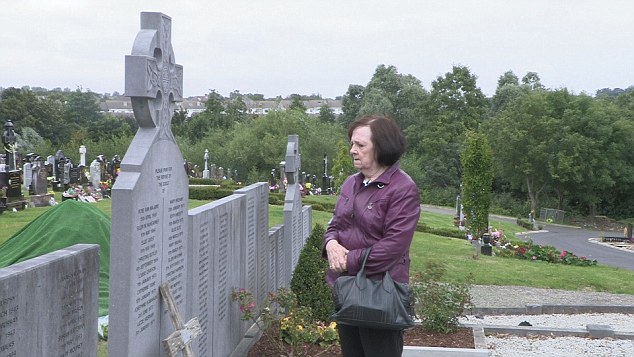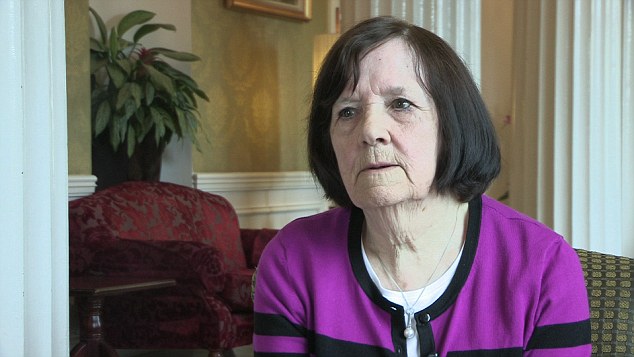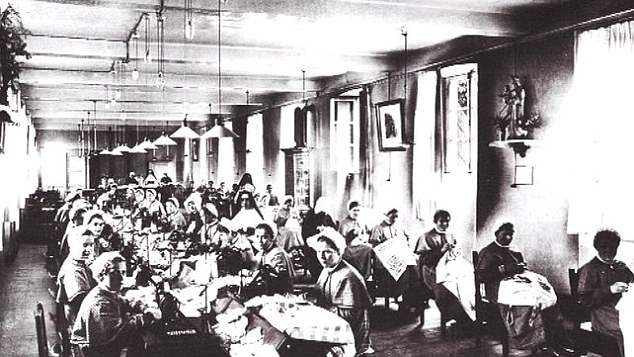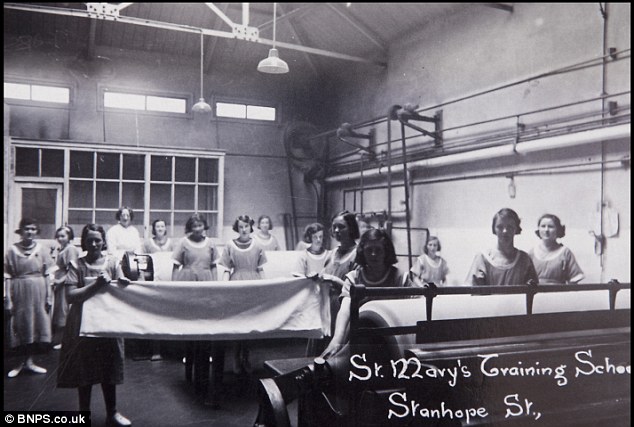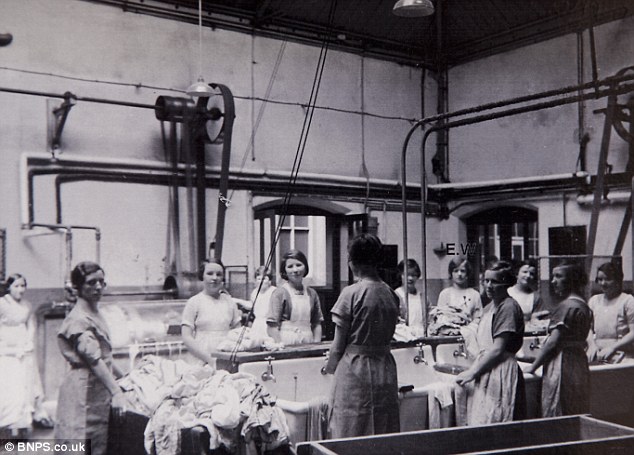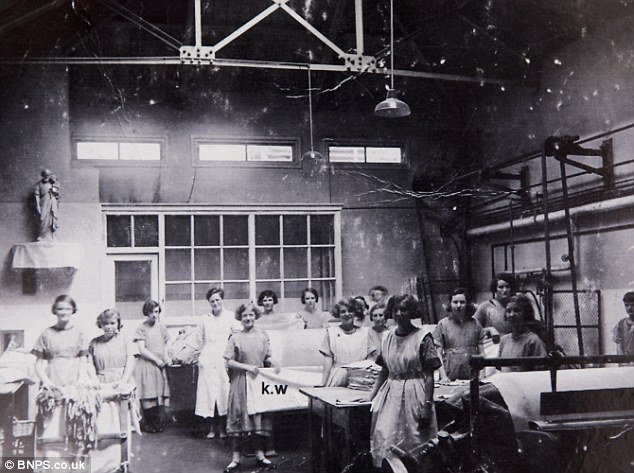"I Want an Apology before I Die': the "Wayward" Women Abused by Nuns in Ireland's Notorious Magdalene Laundries Who Are Still Demanding Justice More Than Two Decades after the Last One Closed
By Sue Lloyd-Roberts
Mary was one of them. Standing in that chilly cemetery she explained that she had found some solace in the sad business of laying out the bodies of the girls who had died. 'I would say to myself, “at least they’ll escape the nuns now and get some rest.”’ ‘I hate coming here. I come here to do what I have to do and then I leave as quickly as possible, to get back home.’ Home is Tunbridge Wells in south east England, where she now lives with her husband Bill. Mary, who was in the 'care' of the nuns for 24 years before she could escape, returns to Ireland more often than she would like. She is a reluctant campaigner for justice for other women who suffered the laundries and appears on TV discussion shows about the brutality of the regime. Ireland has in recent years tried to come to terms with the dark history of the laundries, but, according to Mary, the country is not trying hard enough. When an independent Irish state was launched in 1922, a cash strapped government was happy to delegate welfare duties to the religious orders. Single mothers, the criminal, the mentally unwell and even young girls who displayed signs that they might go astray were sent to the Magdalene Laundries.
The government paid for their upkeep, inspections were cursory and no one seemed to bother to check how long they stayed. Mary was born in 1931 to a single mother in a workhouse. She went on to an orphanage, run by an order of nuns called the Sisters of Mercy where, she says, the children were made to work and beaten if they refused. 'I was beaten with a thick leather belt. I was bleeding for two weeks and to this day I have the scars on my hip.' At 11, she was so hungry that she took apples from the convent orchard and as punishment was sent to work in a Magdalene laundry at High Park in Dublin run by another order, the Sisters of Our Lady of Charity. 'They told me that I would stay in the laundry until I learned to stop stealing. Fourteen years they kept me there. You get less for murder these days!' The women were made to rise at 6 o’clock for mass and then after breakfast went straight down to the laundry to start work. ‘The laundry was heavy, heavy work’, remembers Mary, ‘and the heat was terrible and you didn't break until 12 o’clock when you broke for your dinner, such as it was - potatoes and cabbage and fish - and then after you went straight back to the laundry again to work and you worked in the laundry until at six o’clock.
‘Then we had just a plate of porridge before going back to the laundry again until half past eight.’ Survivors complain of the frequent injuries suffered by ill-nourished young women required to handle the huge mangles, a precursor to the spin dryer. A grave digger working at the High Park laundry recalls seeing the women’s limbs encased in plaster. Barney Curran says he remembers it 'on their arms, their legs and ankles. It seems to me that the women were too small and too frail for that kind of work.' Mary has come to Ireland as the Irish government launches another inquiry – the sixth – in to what went on behind the convent walls. The latest inquiry is in to the mother and baby homes where thousands of babies died. Earlier this year, the Daily Mail revealed that the bodies of babies had been dumped in a cesspit at a Mother and Baby Home in the West of Ireland. 'What is the point of another inquiry?' Mary asks. She and other survivors claim that the last inquiry - the McAleese report in to the Magdalene Laundries - which was published last year was incomplete and inaccurate. She and other survivors are furious that the report concludes that there was no abuse in the Laundries. McAleese reports only a 'rigid and uncompromising regime of physically demanding work and prayer' and that the women, on average, stayed less than a year in the laundries. 'Nonsense!' she says. 'I was there for 14 years and I know a woman in there who was there for 56!' she says pointing to the mass grave.
As if to confirm her point, a grave close to where we are standing is being prepared to receive another former laundry worker who will be buried the next day. A woman, who, although the last laundry closed in 1991, is among many who became so institutionalised that she never left the 'care' of the nuns. When McAleese was gathering evidence for the inquiry, Mary agreed to be interviewed. 'I told Senator McAleese how a priest raped me when I ran away from the Laundry and about the other abuse in the Laundry but he was not interested. Just like the nuns. 'When the police took me back to the Laundry, they didn't believe I had been raped but shaved my head, made me apologise for running away and put me in the punishment cell.' After the rape, Mary gave birth to a daughter, Carmel, born while she was in the care of the nuns. Leaving the cemetery, we move to the cafe where Mary has arranged to meet Carmel. It is only the second time they have met and Mary shows Carmel a photo of herself, as a young mother of 23 cradling a baby in her arms. She explains that it was taken 'before the nuns took you from me, against my will, and gave you away for adoption.' Carmel cries when she sees the photo. Mothers were allowed to stay with their babies in mother and baby homes for about a year before they were adopted, if they survived. Mary worked to earn money to look after her daughter but when she went back to the home to get her, the nuns told her that the baby had been taken away by her 'new mother' and refused to tell her where.
It was Carmel who, when she was in her 30s, found her birth mother with the help of British social workers. People on neighbouring tables lean forward to listen to the two women – one in her 80s and one in her 60s, as they talk and weep. 'You don’t blame me, do you?' Mary asks Carmel, anxiously. 'Of course not, of course not', says Carmel with tears running down her cheeks. Mary, like hundreds of other Magdalene Laundry survivors, has been compensated financially by the government for her time spent as an unpaid forced labourer. The sums are still being calculated and the final bill is expected to reach tens of millions of euros. But the nuns have refused to contribute. Though the Order at the Laundry where Mary was sent, The Sisters of Our Lady of Charity, recognised that for many ‘their time in our refuge is associated with anxiety, distress, loneliness, isolation, pain and confusion and much more.’ Gabrielle North is another survivor of the cruelty of the Laundries. I meet her in Limerick, at the Laundry where she was sent when she was 17.
Her mother had turned to the nuns for help to stop her daughter running away to England with her boyfriend. The nuns responded with their usual remedy for 'wayward' young women – they locked her up in a Magdalene Laundry. 'I tried to escape lots of times', Gabrielle tells me, pointing up at the four metre high stone wall that surrounds the former laundry buildings. 'But there was glass on the top in those days, and you just couldn't get over.' Most of the Magdalene Laundry workers worked six days a week washing and ironing for the nuns’ commercial laundry business. But Gabrielle was put to working in the lace-making department, embroidering the famous lace now on show in Limerick Museum. We look at one of the items – an exquisitely-made christening robe. All I want is an apology - from the nuns, the priests, the Pope, anyone. I want an apology before I die. 'We were commissioned to make the christening dress for the third child of President Kennedy', Gabrielle remembers, 'We would sell lace collars, handkerchiefs and the like. The nuns were definitely making money.' The laundries began closing in the 1970s, as the priests and nuns loosened their grip and the government took over more control of the vulnerable. With dozens of huge buildings in their possession, the nuns have made property sales amounting to some 300 million Euros in recent years. An investigation by the Irish Examiner based on documents made available under the Freedom of Information Act show that the four religious orders involved in running the laundries have combined assets of more than 1.5 billion Euros. When I asked for an interview with the nuns on this subject and the allegations of forced imprisonment made by Mary and Gabrielle, my request was refused. 'I asked them when I was 17 why they imprisoned me', says Gabrielle, 'and I would like to ask them again now, but they won’t say anything.' Her sentiments are echoed by Mary - and many other victims of the Laundry system that destroyed the lives of so many young women. 'All I want is an apology – from the nuns, the priests, the Pope, anyone. I want an apology before I die.'
|
.
Any original material on these pages is copyright © BishopAccountability.org 2004. Reproduce freely with attribution.
